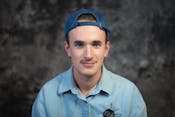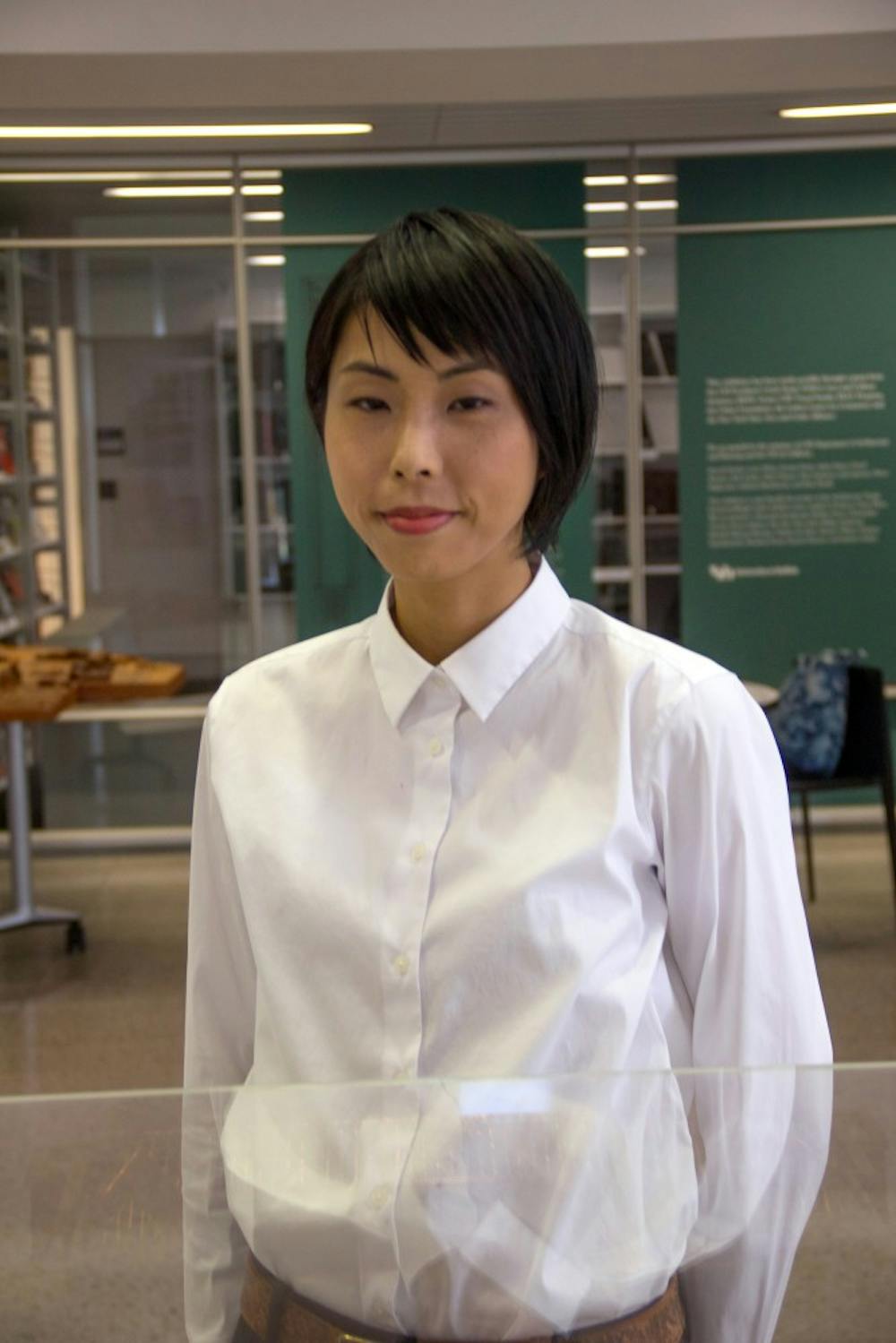As part of UB’s Creative Arts Initiative, filmmaker Rima Yamazaki is residing at UB until Oct. 31.
Yamazaki, a Japanese-born and New York-based filmmaker, has been featured all around the world, with screenings in Brazil’s Move Cine Arte Film Festival and Rome’s MAXXI festival just this year alone.
The filmmaker, alongside professor Nicholas Bruscia, spoke at Hayes Hall on Wednesday after screening her film “Nakagin Capsule Tower: Japanese Metabolist Landmark on the Edge of Destruction.”
Before the screening, Yamazaki spoke with The Spectrum about her work and the film she’s producing in Buffalo.
Q: This is your first residency as a filmmaker - growing up, did you ever see your career landing overseas and what have you discovered thus far in your residency since it’s started in September?
A: It’s my first time leaving outside of New York City in the United States, so I feel like I’m really experiencing American society, an American city. Even the landscape here looks kind of exotic to me, a little empty maybe and a little quiet. It’s really different but I think I needed to kind-of get out the city, challenging myself and to see all the parts of this country what I can do as a filmmaker.
Q: What do you particularly aim for in most of your documentaries?
A: I actually don’t like to call my films documentaries. It’s funny because I often say it’s easy to explain since I’m not making fiction films and if it’s not fiction, it’s usually a documentary and my approach is really a documentary filmmaker’s approach. But I think when people say “documentary,” they think it’s more about offering information, expecting to learn something from the film, although “Nakagin Capsule Tower”is more of a straightforward documentary film I did in the past. I usually prefer films in a more observational style, not personal but more artistic - trying to make a different kind of film of my own.
Q: All the work you do is solo – from editing to shooting – does that make the process more rewarding when you’re featured in spaces around the world from Brazil, Rome, Germany and now in Buffalo?
A: I’m making films by myself for really controlling the images. If I work with a cameraman, it’s from the cameraman’s point of view. If you make documentaries, too, you can’t really say ‘frame this shot this way’ or ‘shoot this,’ everything kind-of happens spontaneous and you don’t really have time, so in that case I have to rely on the cameraman’s skill and view. Although I’m not such a good cameraman, as I’m not really trained in that way but I still can really decide how to frame – and it’s important, you have to select what to show and what not to show.
Q: Buffalo has a rich architectural history. Did that inspire you to come here, and were you aware of that prior to arriving in Buffalo?
A: Yes, that’s why I decided to come here and apply for this program. I actually wanted to visit Buffalo to see the architecture since I read a book by Vincent Scully, an architecture critic. He was a professor at Yale and his book is about American architecture, the history of it. I picked it up because I felt I needed to learn a little bit about that, history in a kind-of comprehensive way. I then found that Buffalo has a really rich culture of architecture so it’s fascinating and when I applied to the [Creative Arts Initiative], I discovered Frank Lloyd Wright and Louis Sullivan, [along] with other interesting buildings like Kleinhans Music Hall, which is a really beautiful one and I didn’t know about the building before. And the grain elevators [downtown]. The buildings I mentioned just now I’m planning to film but I did visit North Campus to look at architecture as my own personal hobby. I didn’t have high expectations but the buildings were sort-of beautiful, students may have a different point of view but UB created an interesting space in terms-of architecture, framing views and creating atrium spaces or courtyards like in Governors.
Q: As far as what you’re looking for with those buildings you mentioned – the grain elevators and Kleinhans – what is your vision with the film you’re working on?
A: I like architecture in general, one of the goals is to capture the experience, experiencing the buildings in person myself. Not just looking at photos but visiting their, spending time there. If you spend time there enough, you find something new or new details - discovering things I was not aware of before. It’s not really just describing the building but finding the characteristics of each building, trying to capture cinematic scenes.
Q: In your practice, filming buildings in Tokyo like the Nakagin Capsule Tower, do you see any influence from Buffalo architects like Frank Lloyd Wright who had a part in the Imperial Hotel in Japan?
A: I’m not sure but the Capsule Tower, the architects were part of the [Japanese] metabolism movement, create their own original architectural style. But before that, the pre-WWII period of Japanese architects, studied with European architects and tried to learn from European schools. So it’s really influenced by European architects. After the war, architects tried to depart from that. So maybe since Wright built the hotel, they could have been influenced by him but he did have a big influence working there and on Japanese architects.
Q: Could you speak a little on your film regarding the Nakagin Capsule Tower and why is it important for you to show this in Buffalo?
A:The new project I’m working on during my residency in Buffalo is about architecture, I also tried to make it about masterpieces and on-going issues in an abstract way. So I think it’s appropriate to show this film here, working with the School of Architecture and Planning. Although the style for the new film will be different, I think it definitely fits in their interests.
Benjamin Blanchet is a senior arts editor and can be reached at benjamin.blanchet@ubspectrum.com.

Benjamin Blanchet is the senior engagement editor for The Spectrum. His words have been seen in The Buffalo News (Gusto) and The Sun newspapers of Western New York. Loves cryptoquip and double-doubles.





